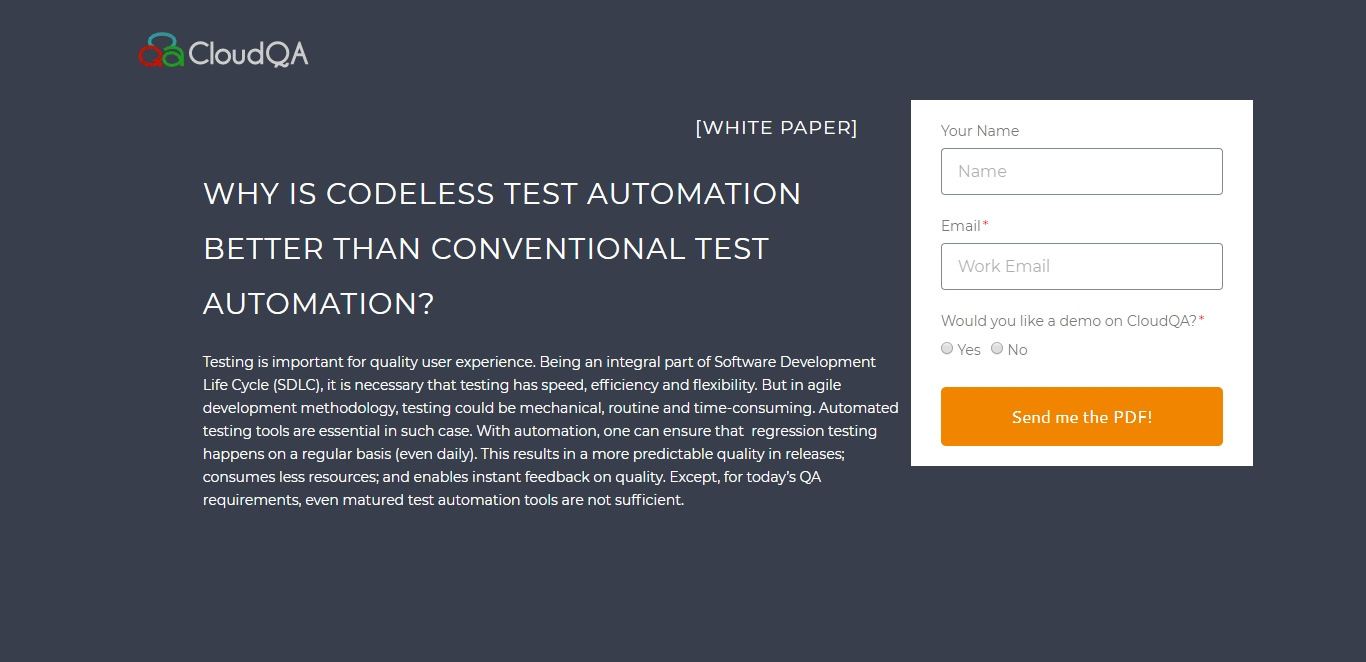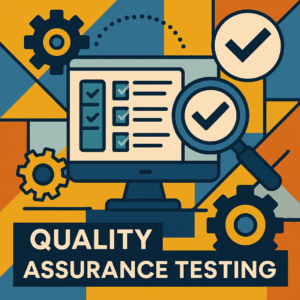Mastering Regression Testing in Software Development: A Comprehensive Guide - Part 2
Creating Effective Test Scripts for Regression Testing
Best Practices for Script Creation
Creating effective test scripts is crucial for successful regression testing. Best practices include understanding the application’s functionality thoroughly, ensuring scripts are designed to cover all critical features and scenarios. Test scripts should be clear and concise, with each script focused on a specific functionality or user journey. This not only makes the scripts easier to manage and maintain but also aids in pinpointing issues when tests fail.
Reusable and modular script design is another best practice, allowing for components of the script to be reused across different tests. This approach saves time and effort in both writing and maintaining scripts. It’s also important to incorporate various data sets into the scripts for data-driven testing, ensuring that the application is tested against a wide range of inputs and conditions.
Commenting and documentation are essential for maintaining clarity and understanding of the test scripts. Well-documented scripts facilitate easier updates and modifications by different team members over time. Regular reviews and updates of the test scripts are necessary to ensure they remain effective and relevant as the application evolves.
Scripting Languages and Frameworks
Choosing the right scripting language and framework is pivotal in creating effective test scripts. Popular scripting languages for regression testing include Python, JavaScript, and Ruby. These languages offer extensive support and libraries for testing, making them a preferred choice for many teams.
Frameworks like Selenium WebDriver for web applications, Appium for mobile apps, and Jest for JavaScript testing provide robust platforms for creating and executing test scripts. These frameworks often come with features like easy browser or device integration, parallel test execution, and comprehensive reporting, enhancing the testing process.
The choice of language and framework should align with the team’s expertise and the specific requirements of the project. It’s also beneficial to select tools that integrate well with other tools and systems in use, such as CI/CD pipelines, version control systems, and bug tracking tools.
Data-Driven Testing Approaches
Data-driven testing approaches enhance the effectiveness of test scripts by allowing them to be executed with different sets of data. This approach ensures that the application is tested against various input scenarios, uncovering potential issues that might be missed with static test data.
Implementing data-driven testing involves creating test scripts that can accept external data inputs, typically from sources like CSV files, databases, or XML files. The script logic remains the same, but the data used in each test run varies, providing a thorough examination of the application’s functionality.
Data-driven testing not only increases test coverage but also simplifies the process of updating test data. Instead of modifying the scripts themselves, new data sets can be added or existing ones modified without altering the script logic.
Maintaining and Updating Test Scripts
Maintaining and updating test scripts is an ongoing process in regression testing. As the application evolves, test scripts need to be reviewed and updated to ensure they continue to test the application effectively. This involves adding new scripts for additional features and updating existing scripts to account for changes in the application.
An important aspect of maintenance is the regular review of test results. Analyzing failures and issues helps in identifying whether script updates are needed. It’s also crucial to remove or update outdated scripts that no longer reflect the current state of the application.
Version control plays a critical role in script maintenance. Keeping test scripts under version control allows teams to track changes over time, revert to previous versions if needed, and manage different versions of scripts for different application versions.
Automation can aid in the maintenance process, especially for large test suites. Automated tools can help in identifying unused or redundant scripts, ensuring the test suite remains lean and relevant.
Finally, fostering a collaborative environment where testers, developers, and other stakeholders regularly communicate and provide feedback on the test scripts can lead to more effective and efficient testing processes. This collaboration ensures that the test scripts are aligned with the overall goals and requirements of the project.
Quickly convert your end-to-end web testing process to run over 80% faster and accurate now.
Continuous Integration and Delivery: Ensuring Quality with Regression Testing
Role of Regression Testing in CI/CD
Regression testing plays a pivotal role in Continuous Integration (CI) and Continuous Delivery (CD) pipelines. It serves as a critical checkpoint, ensuring that new code commits do not adversely affect the existing functionality of the application. In a CI/CD environment, where code changes are integrated and delivered frequently, regression testing provides a safety net that helps maintain software quality and stability.
Incorporating regression tests into CI/CD pipelines means that tests are automatically triggered with every code commit. This integration ensures that issues are detected and addressed early in the development cycle, significantly reducing the risk of major defects in the release phase. The practice of continuous testing in CI/CD also facilitates faster feedback loops, allowing developers to quickly identify and fix issues.
By automating regression tests in CI/CD, teams can maintain a high pace of development without compromising on quality. This approach aligns with the agile principle of delivering working software frequently, supporting rapid iterations and changes while ensuring that the software remains robust and reliable.

Incorporating Regression Testing into CI/CD Pipelines
Incorporating regression testing into CI/CD pipelines requires strategic planning and tool integration. The first step is to select appropriate regression tests that are suitable for automation and are representative of the core functionalities of the application. These tests should be automated to run efficiently without manual intervention.
Integration involves setting up the CI server (like Jenkins, CircleCI, or Travis CI) to trigger the regression tests automatically upon every code commit or at predefined intervals. This setup should ensure minimal disruption to the development workflow and provide quick feedback to developers.
It’s also important to ensure that the testing environment is consistent with the production environment to avoid discrepancies in test results. Managing test data effectively and ensuring that tests can run in parallel without conflict are also key considerations.
Automated reporting and alerting mechanisms should be established to notify the team of test outcomes. These reports should be detailed enough to allow for quick identification and resolution of issues.
Automated Builds and Deployments
In a CI/CD context, automated builds and deployments are integral parts of the process, with regression testing acting as a quality gate. Each build is automatically tested, ensuring that new changes do not break the application. Automated deployments enable the release of software to production or staging environments after successful testing, facilitating a consistent and reliable delivery process.
Automated builds and deployments save time and reduce human errors, allowing for more frequent releases. However, they require a robust set of regression tests to ensure that each release meets the desired quality standards. Continuous monitoring and feedback are essential to promptly address any issues that arise post-deployment.
Monitoring and Analyzing Test Results
Effective monitoring and analysis of regression test results are crucial in CI/CD. This involves setting up dashboards and reporting tools that provide real-time insights into the test results. Tools like TestRail, Zephyr, or custom dashboards integrated with CI tools can be used for this purpose.
Analyzing test results involves looking beyond just pass/fail outcomes. It requires understanding the root cause of failures, identifying patterns or trends in the test results, and assessing the overall health of the application. This analysis helps in continuously improving the test suite and the application’s quality.
Flaky tests, which show inconsistent results, need special attention as they can undermine the reliability of the testing process. Identifying and addressing the causes of flakiness is important to maintain the integrity of the CI/CD pipeline.
Feedback from regression tests should be communicated effectively to the development team for quick action. Integrating issue tracking systems with the CI/CD pipeline ensures that issues are logged and tracked systematically.
Regular reviews of the testing process, including assessment of test coverage, effectiveness, and efficiency, help in continuously refining the testing strategy. This iterative approach ensures that the regression testing process aligns with the evolving needs of the application and the team.
Analyzing Bugs and Defects with Regression Testing
Root Cause Analysis Techniques
Root cause analysis in regression testing is a systematic approach to identify the underlying reasons for defects. It involves examining failed tests to understand why the failure occurred, going beyond the symptoms to uncover the source of the problem. Techniques like the 5 Whys, which involve asking “why” repeatedly until the root cause is identified, are commonly used. Fishbone diagrams can also be helpful in visually mapping out potential causes and their relationships.
Effective root cause analysis requires a thorough understanding of the application and its environment. It involves collaboration between testers, developers, and sometimes even end-users to gain a comprehensive view of the issue. Tools like log analyzers and debugging software can aid in this process, providing deeper insights into the application’s behavior during test execution.
Identifying the root cause is crucial for not only fixing the current defect but also for preventing similar issues in the future. It allows teams to take corrective actions that have a long-term impact, improving the overall quality and reliability of the software.
Identifying and Isolating Defects
The identification and isolation of defects are critical steps in regression testing. When a test fails, the next step is to determine if it’s due to a new code change, an existing uncaught bug, or an issue with the test itself. Techniques like bisecting (gradually reducing the range of code to examine) can be effective in pinpointing the offending code changes.
Isolating defects involves replicating the issue in a controlled environment and narrowing down the conditions that cause it. This might involve testing different data inputs, configurations, or environments to understand the defect’s scope and impact.
Tools like version control systems and debugging software play a key role in this process. They allow testers to track changes, manage different versions of the application, and systematically approach the defect isolation process. Effective communication and collaboration with the development team are also essential in quickly identifying and isolating defects.
Regression Testing for Bug Fix Verification
Once a bug is fixed, regression testing is used to verify the fix and ensure that it hasn’t introduced any new issues. This process involves re-running the tests that initially failed due to the bug, as well as other tests that are potentially affected by the changes made.
Verification through regression testing ensures that the bug fix is effective and that the application’s overall integrity is maintained. It’s important to conduct these tests in an environment that closely mimics the production environment to ensure accurate results.
In addition to verifying the specific bug fix, regression testing at this stage also serves as a check against broader impact. It confirms that the changes made have not adversely affected other areas of the application, maintaining the confidence in the stability and quality of the software.
Collaborating with Development Teams
Collaboration between testing and development teams is key in effectively analyzing bugs and defects. This collaboration starts with clear communication about the findings from regression tests. Testers need to provide detailed and understandable reports on the defects, including steps to reproduce, logs, and any relevant screenshots or videos.
Development teams can use this information to quickly address the issues, with testers providing additional insights as needed. Collaboration tools and integrated platforms (like JIRA, Confluence, or Slack) facilitate this communication, providing a shared space for discussion and information sharing.
Regular meetings or stand-ups can also be useful in maintaining a continuous dialogue between testers and developers. These meetings provide opportunities to discuss recent test results, prioritize bug fixes, and plan for upcoming testing needs.
A shared understanding of the project’s goals and priorities ensures that both teams are aligned in their efforts. Testers should be aware of the development roadmap and any specific challenges or constraints faced by the developers. Similarly, developers should understand the testing strategy and the importance of providing testable code.
Adopting practices like pair programming, where a developer and a tester work together, can also be beneficial. This approach promotes a deeper understanding of the code and tests, leading to more effective and efficient bug analysis and resolution.
Finally, fostering a culture of mutual respect and understanding between the two teams is crucial. Recognizing the value that each brings to the project, and working collaboratively towards a common goal of high-quality software, is essential for successful bug analysis and resolution in regression testing.
Maintaining and Adapting Regression Test Suites
Test Suite Maintenance Strategies
Maintaining regression test suites is crucial to ensure their ongoing effectiveness and relevance. A key strategy is regular reviews and updates of the test suite. This involves assessing the current test cases for their validity and relevance to the application as it evolves. Tests that no longer apply should be removed to reduce clutter and improve efficiency.
Another important aspect is keeping the test cases up-to-date with the latest application changes. This may include updating the test steps, expected results, or test data. Automation scripts in particular need regular updates to align with changes in the application’s user interface or functionality.
Effective maintenance also involves optimizing the test suite for execution efficiency. This could mean reorganizing tests, enhancing test scripts for faster execution, or identifying tests that can be run in parallel without conflict. Using tools that provide insights into test coverage and execution time can help in identifying areas for optimization.
Documenting any changes made to the test suite is essential for transparency and for future reference. This includes not just the changes themselves, but also the rationale behind them, ensuring a clear understanding for all team members.
Version Control and Test Case Management
Version control is a critical component in maintaining regression test suites. It allows teams to track changes to the test cases over time, manage different versions of tests for different versions of the application, and easily revert to previous versions if needed.
Effective test case management involves organizing the tests in a way that makes them easy to find, execute, and update. Categorizing tests based on features, modules, or user journeys can aid in this organization. Utilizing test management tools can also streamline this process, providing features like test planning, execution tracking, and reporting.
In addition, aligning test cases with specific release versions or sprints helps in managing the scope of testing for each development cycle. This alignment ensures that the tests are always relevant to the version of the application being developed or maintained.
Incorporating Feedback and Lessons Learned
Incorporating feedback and lessons learned from previous testing cycles is crucial for the continuous improvement of regression test suites. This involves analyzing the results of past test runs to identify common failures, areas of high risk, or tests that consistently pass without issue.
Gathering feedback from team members, including developers, testers, and even end-users, can provide valuable insights into the effectiveness of the tests and areas for improvement. This feedback should be systematically collected and reviewed to inform updates to the test suite.
Lessons learned can also come from external sources such as industry best practices, updates in testing methodologies, or new tools and technologies. Staying informed and adapting the test suite based on these learnings can enhance its effectiveness and efficiency.
Scaling and Optimizing Test Suites
As applications grow and evolve, regression test suites must also scale to accommodate the increasing complexity. This involves adding new tests for additional features and functionalities while maintaining the manageability of the test suite.
Scaling also means ensuring that the test suite can handle the increased load in terms of execution time and resource usage. This may require optimizing tests for faster execution, implementing more efficient test data management, or leveraging cloud resources for scalable test execution.
Optimization also involves identifying redundant or overlapping tests and removing them to streamline the test suite. Utilizing analytics and test coverage tools can aid in this optimization by providing insights into which tests are most valuable and which may be candidates for removal.
Another aspect of scaling is ensuring that the test suite remains maintainable as it grows. This involves maintaining clear documentation, following consistent naming and organization conventions, and ensuring that the test suite is structured in a way that is easy to navigate and update.
Regularly evaluating the tools and technologies used in regression testing is also important. Adopting new tools or technologies that offer better performance, more features, or better integration with other tools can help in managing a growing test suite more effectively.
Jump start automation of your web application
Try our Testing As A Service starting at $499/month
LIKE THIS POST SHARE IT WITH YOUR FRIENDS
RECENT POSTS
Guides

How To Select a Regression Testing Automation Tool For Web Applications
Regression testing is an essential component in a web application development cycle. However, it’s often a time-consuming and tedious task in the QA process.

Switching from Manual to Automated QA Testing
Do you or your team currently test manually and trying to break into test automation? In this article, we outline how can small QA teams make transition from manual to codeless testing to full fledged automated testing.

Why you can’t ignore test planning in agile?
An agile development process seems too dynamic to have a test plan. Most organisations with agile, specially startups, don’t take the documented approach for testing. So, are they losing on something?

Challenges of testing Single Page Applications with Selenium
Single-page web applications are popular for their ability to improve the user experience. Except, test automation for Single-page apps can be difficult and time-consuming. We’ll discuss how you can have a steady quality control without burning time and effort.

Why is Codeless Test Automation better than Conventional Test Automation?
Testing is important for quality user experience. Being an integral part of Software Development Life Cycle (SDLC), it is necessary that testing has speed, efficiency and flexibility. But in agile development methodology, testing could be mechanical, routine and time-consuming.





